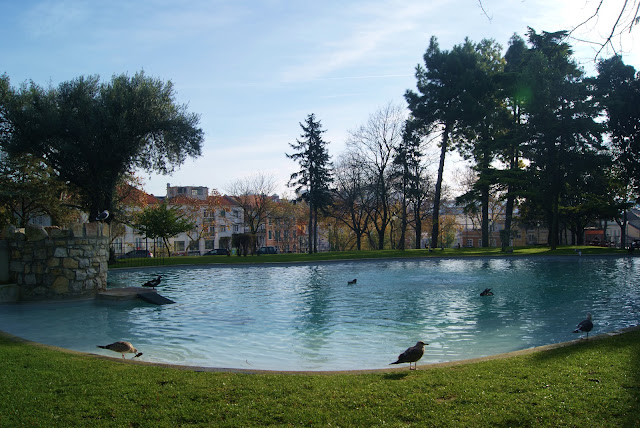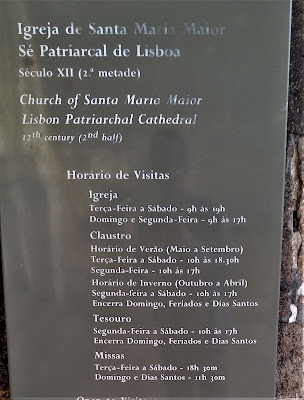Previously in Part 3, I visited Belem (the historical enclave) and Coba Da Roca, the Westernmost end of continental Europe. It was a fantastic day, and I was absolutely knackered. Check it out at:
~~~
On day 4, I crossed the magnificent River Tagus to the opposite bank, to visit Cristo Rei in Almada.
The 25th April Bridge and the suburb of Alcantara
Towering monument of Jesus overlooking Lisbon since 1959.
It was the 4th full day in Lisbon, and I basically covered the sights that were essential. As usual, I left my hostel by 10am, and took the ferry across the River Tagus from Cais Ferry Station.
Finally, I am on the River Tagus
Nothing beats taking a boat ride on a clear day with calm waters
For a moment, I felt like Vasco da Gama or Afonso Albuquerque
Across the river is the district of Almada. The main attraction being The Sanctuary of Christ the King, or Cristo Rei, reachable by taking bus #101 from the terminal. With a height of 110m, on top of a hill 133m above sea level, the monument towers above the Lisbon skyline.
Quite an impressive work of engineering
The sanctuary provides one of the most spectacular views of Lisbon.
Downtown Lisbon - And you could imagine Afonso and his entourage sailing by enroute to Asia, some 500 years ago
25th April Bridge, and the suburb of Alcantara
Almada is an outskirt with rather slow pace of life
A relaxing place as compared to Lisbon city center
It was winter in Europe but sunlight was in abundance
Roast chicken, bread and egg tarts (with sea breeze)
After refueling my stomach, I checked out some ships on exhibition nearby.
In the 15th century, ship-building must have been a booming industry
Nowadays, people mostly take planes (before COVID came)
After COVID struck, we depend more on Teams, Zoom and emails. Skype has also obsolete after being taken over by Microsoft.
If I had a few more people, I would be tempted to buy and cook some fresh seafood
That's for you Alfonso (technically, the first European in Malacca)!
This was the final full day, and I decided to visit some museums in town (which were free).
A quick research pointed me to Dinheiro Museum. Dinheiro Museum was once the home of the Lisbon Bank.
Old notes
The first coins in Portugal were done using 'mechanical striking' method, I suppose, striking the shapes and engraving. Later, the 'die engraving' method brought a significant improvement in the quality of the engraving work. The use of standardized letter and portrait punches allowed matrices and working dies to be produced in a faster and more regular way.
Coin from the 11th century - Pure gold!
Dobra De 24 Escudos coin
The Dobra De 24 Escudos is the largest and heaviest coin ever minted in Portuguese history. It has 85.41g of Brazilian gold. Its die and coin bear a unique witness to the technical and artistic excellence achieved by the Lisbon Mint during the rule of King Joao V (circa 1706-1750).
Money from China, during the golden age of Ming Dynasty (1368-1644)
Nowadays of course, they use the Euro, which is a remarkable achievement!
The Dinheiro Museum houses another amazing relic, or I should say monument - King Dinis' Wall. King Dinis (Denis) reigned from 1279-1325, and during this time, Portugal became a center for culture and learning. The wall was essential to the defense of the city.
This museum provides valuable background of Lisbon, from the days of the Moors.
The city was recaptured from the Moors in 1147, after it was taken in the 8th century
16th century ceramic tiles from Seville, Spain
King Dinis' Wall from the Medieval period, located underground
I then visited Lisbon Cathedral, also known as Church of Santa Maria Maior, built in 1147, the year of the reconquest.
Quite logically, the oldest church in Lisbon today

With important artifacts
Not too far away from the church is the Museum Aljube, the former prison of Lisbon. Also known as the Museum of Resistance and Liberty, this is a fascinating place to learn about modern Portuguese history, especially on the struggles during the Salazar dictatorship between 1928 to 1974.
Freedom and liberty are always worth fighting for
Recent events in Myanmar (just shortly after a general election), where it is under a 1-year Emergency under the military junta reminds us how fast things could change.
A list of colonies, which includes Timor Leste, still not yet an ASEAN country
Types of tortures that were used
Ask any colonial power of the 18th-19th century, most will admit that things were not too rosy for their subjects. But it is essential that countries recognize and own up to their mistakes and mishaps, and move on. You could try to cover your tracks and dismiss the war crimes you did, but the truth will prevail one day.
Angola war of independence
After WW2, Portugal faced a lot of resistance in Africa, and fought 3 wars there simultaneously. When a few generals (decided it was enough), organized a bloodless coup and ended the dictatorship of Portugal in 1974, the colonies of Africa such as Angola, Mozambique, Guinea-Bissau gained their independence.
Moorish towers form part of the Aljube Museum, and you could see Crito Rei in Almada
I walked out of the museum quite drained, but felt that I took a crash course on modern history of Portugal
As I soaked up the evening breeze, I couldn't feel more fortunate for this winter holiday
~~~
On the next day, I will travel down south to the seaside town of Faro.
Check it out at:








































No comments:
Post a Comment